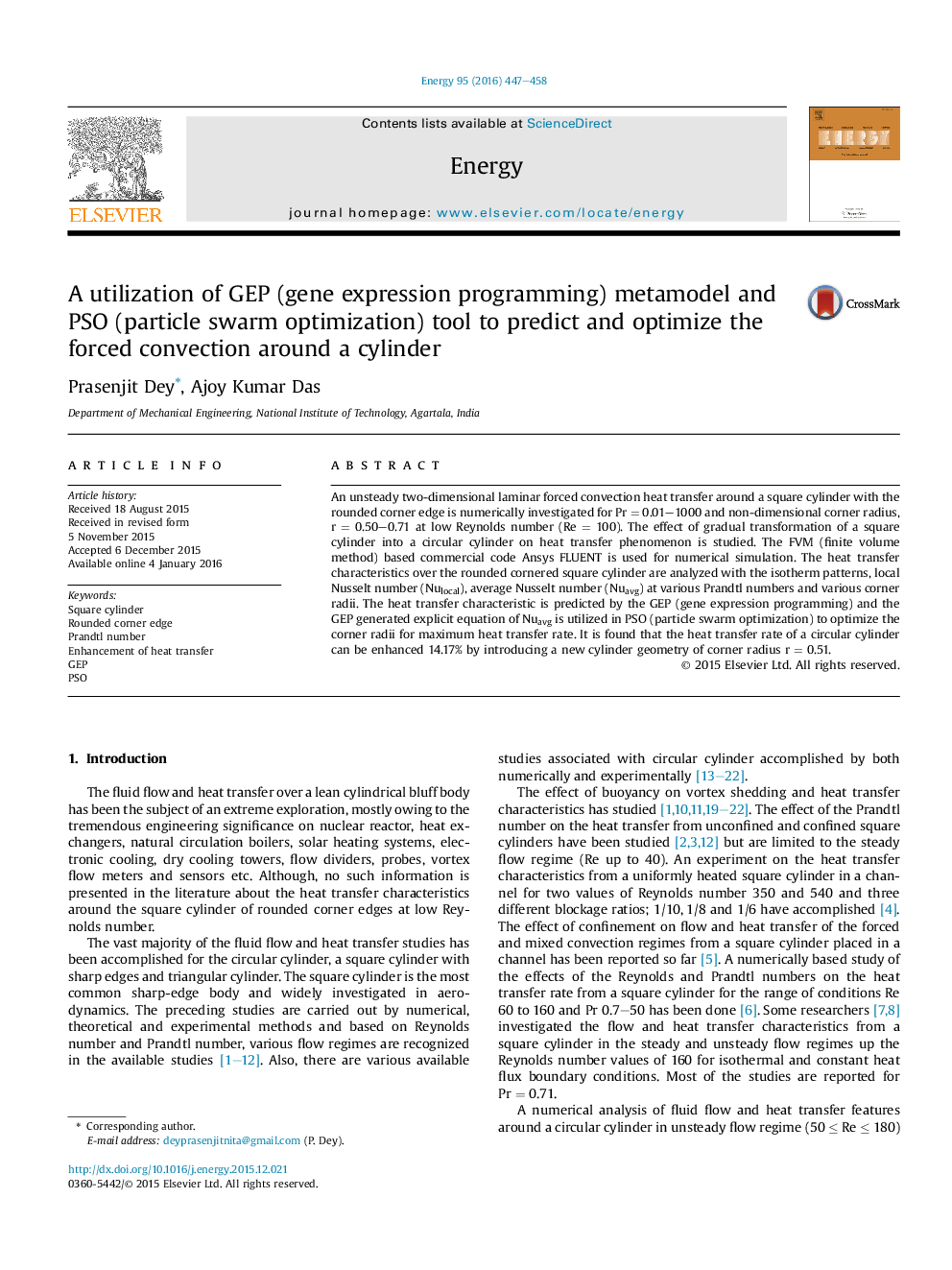| کد مقاله | کد نشریه | سال انتشار | مقاله انگلیسی | نسخه تمام متن |
|---|---|---|---|---|
| 1731448 | 1521453 | 2016 | 12 صفحه PDF | دانلود رایگان |

• The heat transfer rate enhance progressively with corner radius.
• GEP can predict the heat transfer rate very efficiently having very less error.
• The PSO tool can be efficiently applied in the forced convection study.
• The efficacy of the PSO totally depends on the precision of the objective function.
• The maximum enhancement of heat transfer of 14.17% is at Pr = 1 and at r = 0.51.
An unsteady two-dimensional laminar forced convection heat transfer around a square cylinder with the rounded corner edge is numerically investigated for Pr = 0.01–1000 and non-dimensional corner radius, r = 0.50–0.71 at low Reynolds number (Re = 100). The effect of gradual transformation of a square cylinder into a circular cylinder on heat transfer phenomenon is studied. The FVM (finite volume method) based commercial code Ansys FLUENT is used for numerical simulation. The heat transfer characteristics over the rounded cornered square cylinder are analyzed with the isotherm patterns, local Nusselt number (Nulocal), average Nusselt number (Nuavg) at various Prandtl numbers and various corner radii. The heat transfer characteristic is predicted by the GEP (gene expression programming) and the GEP generated explicit equation of Nuavg is utilized in PSO (particle swarm optimization) to optimize the corner radii for maximum heat transfer rate. It is found that the heat transfer rate of a circular cylinder can be enhanced 14.17% by introducing a new cylinder geometry of corner radius r = 0.51.
Journal: Energy - Volume 95, 15 January 2016, Pages 447–458